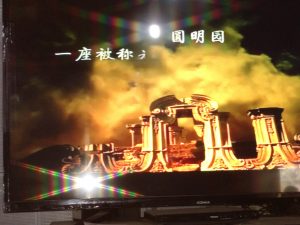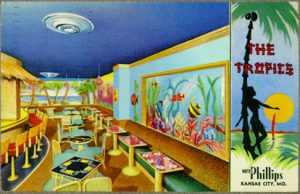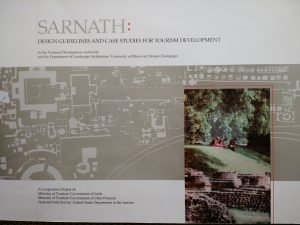 “Scenes from the Museums: Palace Museum, Beijing and National Palace Museum, Taipei,” in Mike Robinson, Li-Jung Wang, Hui-Mei Chen, Yung-Neng Lin, eds., [Conference Proceedings] Inheriting the City: Advancing Understandings of Urban Heritage (Birmingham: Ironbridge Institute for Cultural Heritage, 2016). The economic surplus generated by peasant, subsistence-based agriculture in the Chinese empire is what ultimately paid for the formation of successive imperial collections. The collections conferred political legitimacy on the emperor, and in turn, one sign of the emperor’s political legitimacy was the imperial collections. Today, the former imperial Chinese art collections are split between the Palace Museum (Gùgōng Bówùyùan) in Beijing, and the National Palace Museum (Guólì gùgōng bówùyuàn) in Taipei. After the beginning of the Chinese Revolution in 1911 and the fall of the Qing dynasty in 1912, they became prized cultural possessions fought over by Chiang Kai-shek’s Nationalists and Mao Tse-tung’s Communists until 1949 when a significant portion were spirited away to Taiwan, while the rest remained in Beijing. This essay traces the vicissitudes of the former imperial collections primarily from the late 19th and 20th centuries, down to the present.
“Scenes from the Museums: Palace Museum, Beijing and National Palace Museum, Taipei,” in Mike Robinson, Li-Jung Wang, Hui-Mei Chen, Yung-Neng Lin, eds., [Conference Proceedings] Inheriting the City: Advancing Understandings of Urban Heritage (Birmingham: Ironbridge Institute for Cultural Heritage, 2016). The economic surplus generated by peasant, subsistence-based agriculture in the Chinese empire is what ultimately paid for the formation of successive imperial collections. The collections conferred political legitimacy on the emperor, and in turn, one sign of the emperor’s political legitimacy was the imperial collections. Today, the former imperial Chinese art collections are split between the Palace Museum (Gùgōng Bówùyùan) in Beijing, and the National Palace Museum (Guólì gùgōng bówùyuàn) in Taipei. After the beginning of the Chinese Revolution in 1911 and the fall of the Qing dynasty in 1912, they became prized cultural possessions fought over by Chiang Kai-shek’s Nationalists and Mao Tse-tung’s Communists until 1949 when a significant portion were spirited away to Taiwan, while the rest remained in Beijing. This essay traces the vicissitudes of the former imperial collections primarily from the late 19th and 20th centuries, down to the present.
 “Untitled (2004),” Catalogue essay for Beyond East and West: Seven Transnational Artists (2004). Written in a deliberately disjunctive style that employs juxtaposition and pastiche, this experimental essay mimics the dislocations of diasporic living. Discusses work by Jananne al-Ani, Ghada Amer, Mona Hatoum, Walid Raad, Michal Rovner, and Shazia Sikander. Considers in turn political violence and terrorism (civil war, 9/11, car bombs), borders and maps, gender, audience, hybridity (diaspora and exile; third spaces, contact zones and double consciousness), and how history is viewed with deep suspicion.
“Untitled (2004),” Catalogue essay for Beyond East and West: Seven Transnational Artists (2004). Written in a deliberately disjunctive style that employs juxtaposition and pastiche, this experimental essay mimics the dislocations of diasporic living. Discusses work by Jananne al-Ani, Ghada Amer, Mona Hatoum, Walid Raad, Michal Rovner, and Shazia Sikander. Considers in turn political violence and terrorism (civil war, 9/11, car bombs), borders and maps, gender, audience, hybridity (diaspora and exile; third spaces, contact zones and double consciousness), and how history is viewed with deep suspicion.
 “Exhibiting Hawai’i,” pp. 321-352 in C. Richard King, ed., Postcolonial America (Urbana: University of Illinois Press, 2000). A slightly different version appeared as “Exhibiting the Museum,” Journal of Historical Sociology, vol. 13 (2000): 391-431. Self-reflexive essay written in style of a mock exhibition proposal for “Hawai’i: Postcards of Exoticism, Exoticism of Postcards.” Imagined exhibition designed for four small rooms or gallery areas. Room 1: Production. Room 2: Imagery. Room 3: Reception. Room 4: Constructing “Hawai’i: Postcards of Exoticism, Exoticism of Postcards.” After viewing the exhibition, museum visitors are invited to record their comments in a notebook at the exit.
“Exhibiting Hawai’i,” pp. 321-352 in C. Richard King, ed., Postcolonial America (Urbana: University of Illinois Press, 2000). A slightly different version appeared as “Exhibiting the Museum,” Journal of Historical Sociology, vol. 13 (2000): 391-431. Self-reflexive essay written in style of a mock exhibition proposal for “Hawai’i: Postcards of Exoticism, Exoticism of Postcards.” Imagined exhibition designed for four small rooms or gallery areas. Room 1: Production. Room 2: Imagery. Room 3: Reception. Room 4: Constructing “Hawai’i: Postcards of Exoticism, Exoticism of Postcards.” After viewing the exhibition, museum visitors are invited to record their comments in a notebook at the exit.
 “Ethnography of a Postcolonial Site: Sarnath,” pp. 327-350 in Vikramditya Prakash, ed., Theatres of Decolonization: Architecture, Agency, Urbanism, vol. 2 (Seattle: College of Architecture and Urban Planning, University of Washington, 1997). Also appeared in Journal of Southeast Asian Architecture 1 (1996): 72-91. Asks what happens when Indian government commissions American landscape architects to develop Buddhist Sarnath, a World Heritage site, for commercial, especially Japanese Buddhist, tourism. Traces genesis of design motifs, architectural styles, and plans for site layout and signage, interpretive center, site museum, plus land use guidelines for half dozen neighboring Hindu villages. American-proposed plan excludes from consideration already established Buddhist temples and monasteries in the area, as well as input from Tibetan and other local Buddhist leaders, and nearby Hindu villagers.
“Ethnography of a Postcolonial Site: Sarnath,” pp. 327-350 in Vikramditya Prakash, ed., Theatres of Decolonization: Architecture, Agency, Urbanism, vol. 2 (Seattle: College of Architecture and Urban Planning, University of Washington, 1997). Also appeared in Journal of Southeast Asian Architecture 1 (1996): 72-91. Asks what happens when Indian government commissions American landscape architects to develop Buddhist Sarnath, a World Heritage site, for commercial, especially Japanese Buddhist, tourism. Traces genesis of design motifs, architectural styles, and plans for site layout and signage, interpretive center, site museum, plus land use guidelines for half dozen neighboring Hindu villages. American-proposed plan excludes from consideration already established Buddhist temples and monasteries in the area, as well as input from Tibetan and other local Buddhist leaders, and nearby Hindu villagers.
